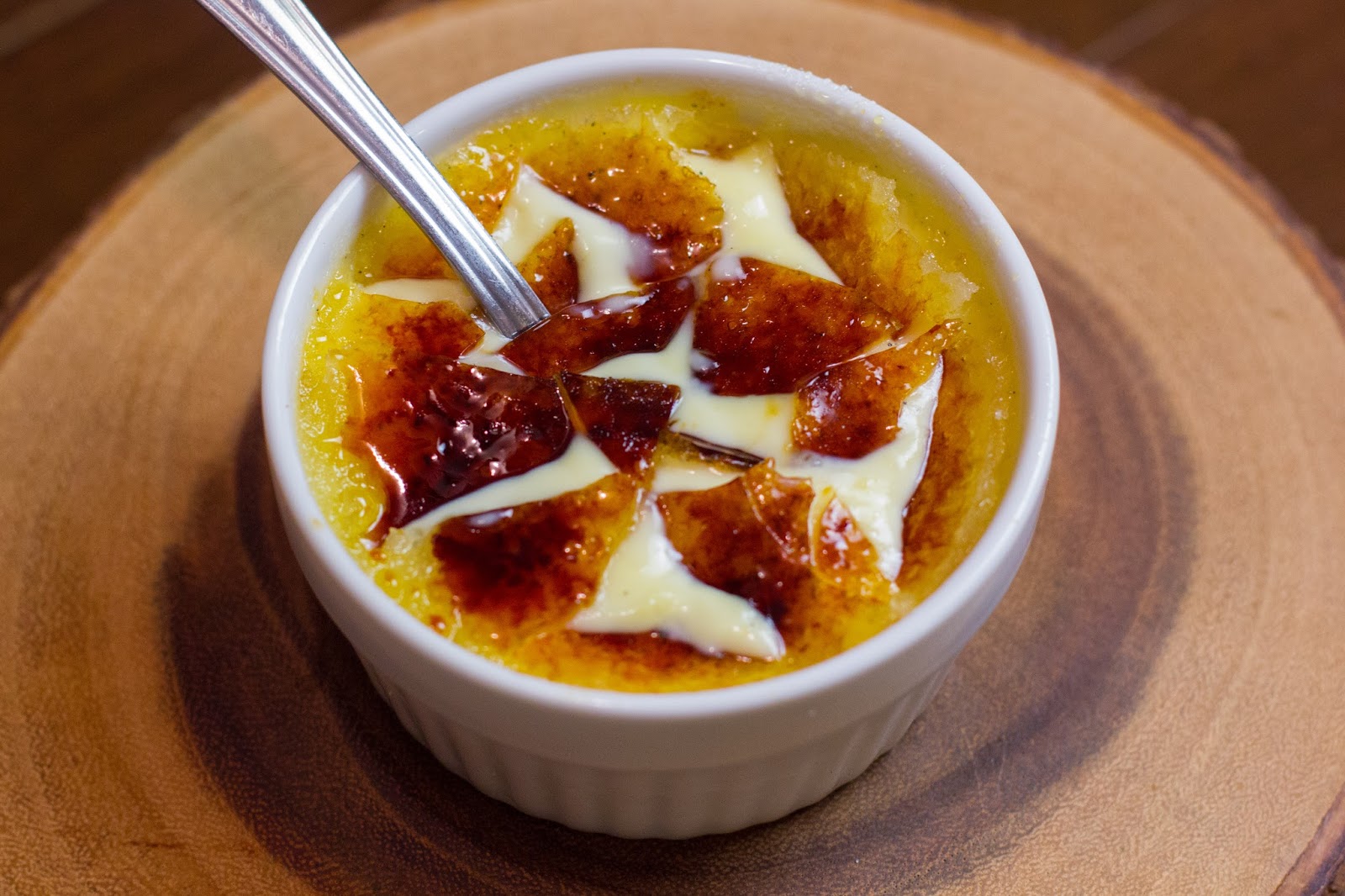
Bring to the boil over a medium-low heat.Ģ. Scrape out the seeds and put the pod and the seeds into the pan with the cream. Pour the cream into a small, heavy-based pan and slit the vanilla pod in half lengthways. Preheat the oven to 150C and put 2 small ovenproof ramekins in a baking tin. Photograph: Felicity Cloakeįor some reason, a bowl of custard isn't seen as an appropriate dessert for a grown adult – but scorch the top and give it a French name, and it's suddenly all sophisticated. Simon and Lindsey describe the results as "voluptuous" but I think I prefer the light wobbliness of the baked versions.įelicity's perfect creme brulee. For their recipe, then, I heat the cream with a vanilla pod, leave it to infuse for a while, then pour it on to the egg yolks and sugar and return the whole lot to a pan and heat until it thickens "to an almost jelly-like consistency", rather like in Mrs Raffald's recipe. Of course, they say, it's easier to control the cooking time if one takes the easy way out, but "it does not give the same texture as the stove-top method". "Once upon a time one was instructed to make the custard in the traditional way, cooked very gently in a pan until thick." But Simon Hopkinson and Lindsey Bareham have other ideas: "it seems that creme brulee is made differently these days," they write disapprovingly.

I can't believe how easy it is: had I known creme brulee was so quick, I'd have gorged myself silly long ago. Most of the recipes I try – Claire Clark, Heston, Mary Berry – involve pouring hot milk or cream on to egg yolks and sugar, mixing them together and then sticking the resulting custard in the oven for half an hour. The sugarĬlaire Clark recipe creme brulee. This gives her custard more body, but a slightly off-putting paste-like texture and colour. I prefer the creamier, lighter flavour of Mary's brulee though, so I decide to reduce the number of yolks and see whether I can achieve the same texture without such richness – 3 seems about right for 300ml of cream.Įlizabeth Raffald's 1769 recipe, reproduced in Jane Grigson's English Food, uses egg whites as well as yolks, beaten separately and added to the custard along with a spoonful of flour. I think I could probably manage a good half of Claire's, despite the nine yolks she puts in there – like Lindsey and Simon's, it's eggy, but not overpoweringly sweet. In fact, Heston's brulee is so rich with eggs that I can't face going back for a second spoonful, an unprecedented occurrence. Claire's brulee has the best texture – firm, yet not in the least rubbery: Mary's is (I hate to say it) slightly too liquid, while Heston's, perhaps because of the vast number of egg yolks he puts in, is solid, but rather jellied. Mary Berry goes for single instead in her Traditional Puddings and Desserts, and Larousse Gastronomique a mixture of whipping cream and milk.

Claire Clark, in her book Indulge, and Simon Hopkinson and Lindsey Bareham in The Prawn Cocktail Years use double cream, which makes sense, as this is to be a thick custard. Photograph: Felicity CloakeĪs the name suggests, dairy of some sort is the key ingredient of creme brulee. Which, I think you'll agree, is what really makes the dish. As she notes, "custards made from eggs and cream were a European commonplace" at the time, so it would be pitifully jingoistic to try and claim the entire thing for Queen and country – but perhaps we might take the credit for the inspired addition of the caramel. But in fact, Jane Grigson, suspicious of the late date (1860s) given for this event in Florence White's Good Things in England, uncovered a trail of recipes leading back to a 17th century manuscript book. Great was my childish joy when I learned that this dish was in fact British – the usual story attributes it to Trinity College in Cambridge, which boasts a dedicated branding iron in the shape of the college crest. Any softness on the top, or graininess in the custard was not tolerated – although, as a professional, I always cleaned the dish regardless. The best had a crisp shell that shattered satisfyingly under my spoon and a rich, smooth layer of custard beneath with just a whisper of vanilla. But, even at that age, I recognised that not all brulees were created equal. In the 80s and early 90s, it seemed to be on every dessert menu – and if it was there, I had to have it. A t one time, between the ages of seven and 12, I believe I was among the south-east's foremost creme brulee experts.


 0 kommentar(er)
0 kommentar(er)
